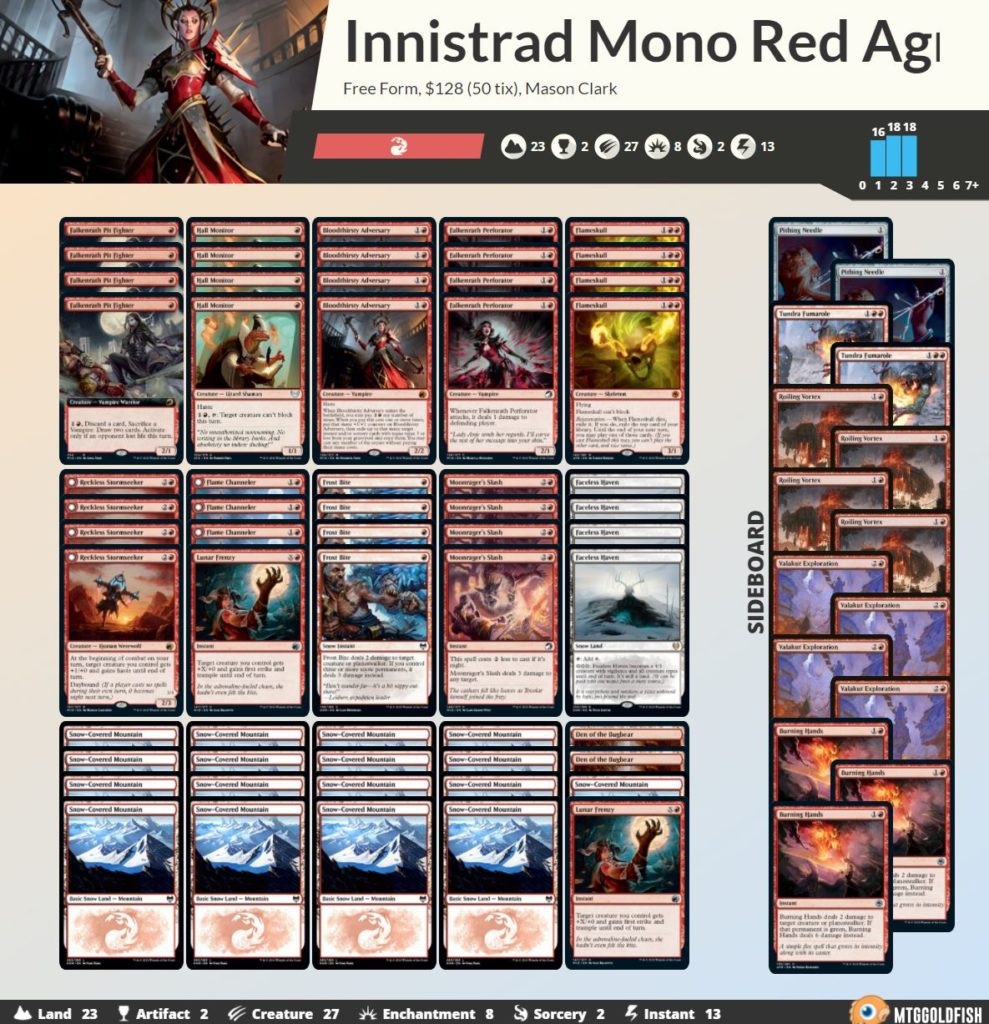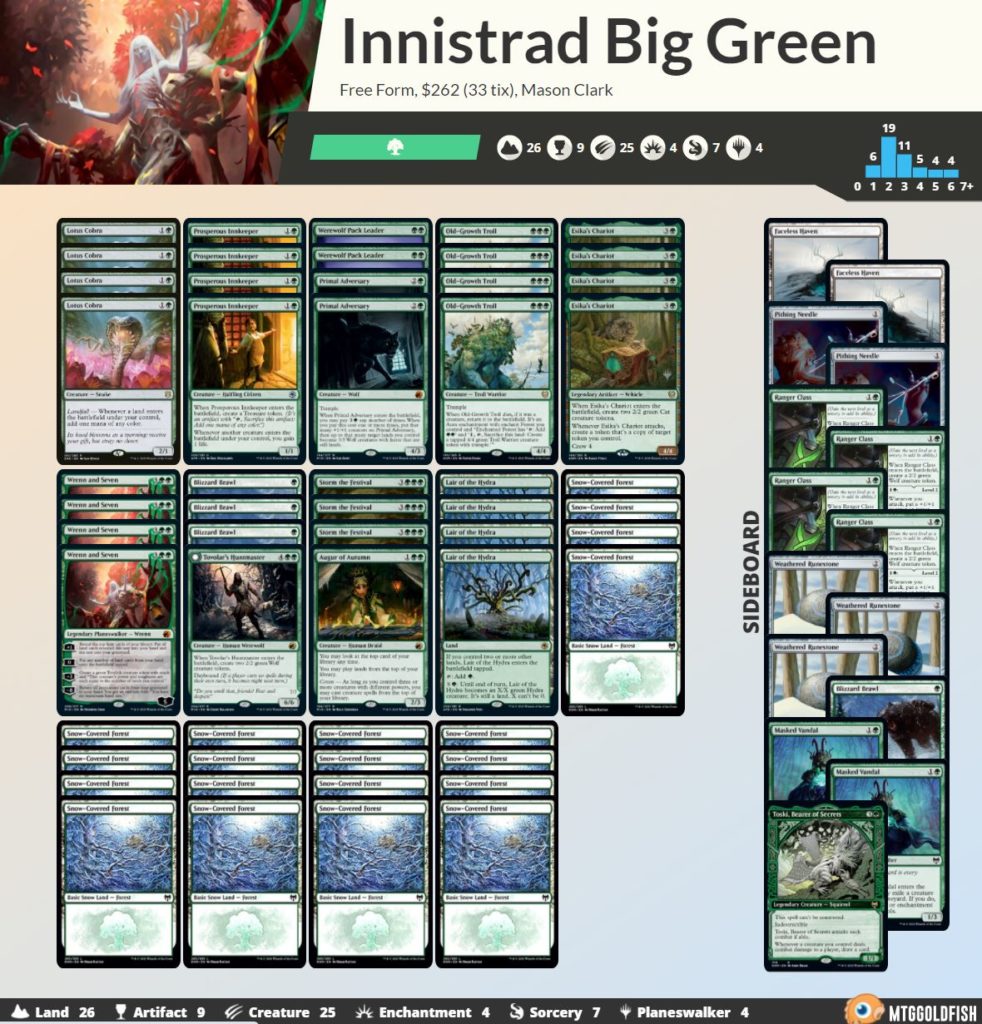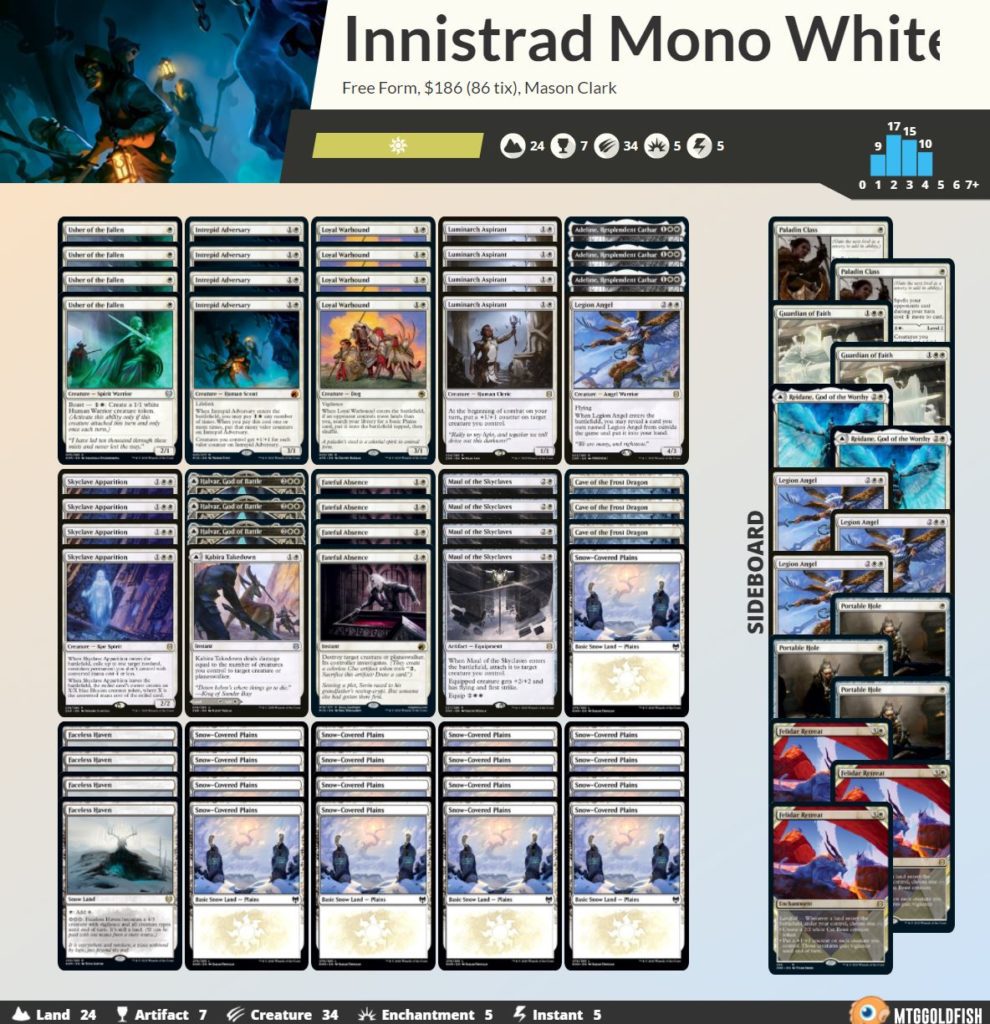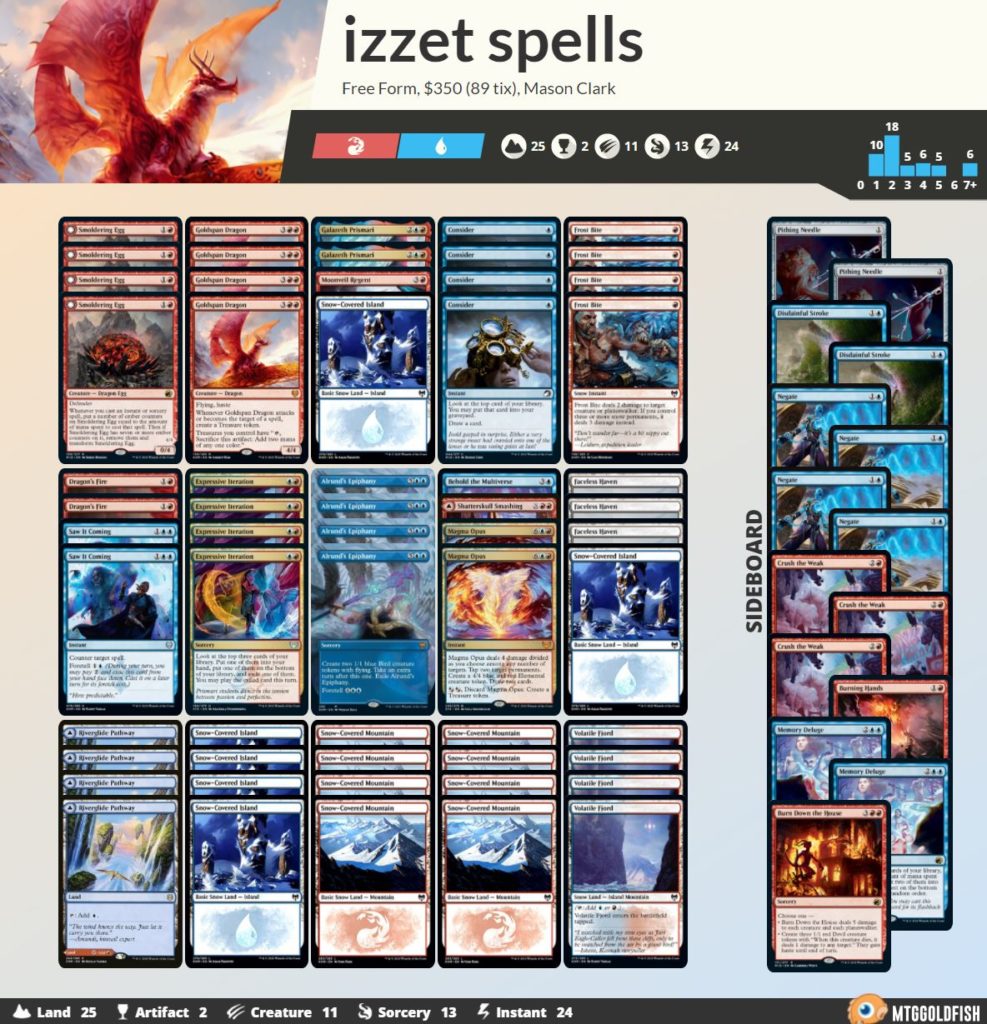Standard rotation is here, and we’ll be saying farewell to many format-defining cards. For the last two years, Throne of Eldraine has shaped Standard in ways we hadn’t seen in a decade, with more cards banned than almost any other set. But that’s behind us now — starting today, we have a fresh, new Standard format to explore. Midnight Hunt has brought lots of exciting new cards, and some cards from the last year’s Magic sets may finally have their time in the sun!
If you’re looking for a deck to play in the Arena queues this week, I have a couple decks that I think could be exciting starting points. But first, a few disclaimers:
- I tried to be considerate of wildcards when building these decks.
- I haven’t played with any of these decks yet! If you find that any of these cards aren’t working for you on ladder, by all means, make some changes. These decks aren’t built to be 100% correct; my main goal is to provide some early builds that might spark some creativity in you.
Mono-Red

Starting off, I wanted to build a traditional Mono-Red deck. The last two years of red decks were built on the backs of Anax, Embercleave, and Torbran; now that those tools are all gone, I wanted to explore what we could do next.
The first card that really jumped out to me was Reckless Stormseeker. It doesn’t seem like much on first read, but a 3/3 with haste is a great floor, especially for these decks. It also allows our later creatures to come in with haste and really swing races.
Moonrager’s Slash is probably the best card for red in the set. Even if it’s just clearing the way for your attackers, you can expect this card to show up in lots of red decks. I might be skimping on day/night enablers with only four cards, but I think you only need eight to have it reliably as a double spell on turn four.
While we are on the topic of spells, another huge get for these decks is Bloodthirsty Adversary. Last week, I called this card the new Robber of the Rich, and I stand by that. Adversary will keep the pressure on early, and in the late game, it looks to flashback a way to clear a path or finish things off with a burn spell. It’s also a great source of flood protection, which is something these decks always want.
There are a few more strong early game cards worth playing here, but the last thing I wanted to point out is the high-ish land count for our low-curve deck. I chose to run more lands than usual to enable the creature lands consistently, along with Adversary‘s ability. Consistent, on-curve draws are a huge appeal to this deck, and having uses for extra mana will benefit you in this archetype.
Green Midrange

This deck might be a little controversial. Basically, this deck is for you if you believe Storm the Festival and Wrenn and Seven are cards worth building around. I think, in both cases, the answer is yes.
Storm the Festival earned some comparisons to Collected Company, but it has largely been disregarded by players. But there are few big differences to keep in mind when comparing the two cards, besides the mana cost. First, Storm hits any permanent. That’s a huge plus when you’re looking to find cards like Wrenn and Seven or Esika’s Chariot. This spell also has flashback; while you’ll be disappointed to hit two lands most of the time, they will help pay the flashback cost in the future. You have plenty of ways to cast this on turn five, which is soon enough for it to swing games.
Meanwhile, Wrenn and Seven is one of the best Standard walkers we’ve seen in the last year. They allow you to keep making your land drops while also rewarding you for having excess lands. Wrenn also works great with Esika’s Chariot, which is shaping up to be another huge player in Standard. Wrenn’s ultimate doesn’t even really affect the card’s playability — you can just keep drawing lands and pumping out tokens, and your opponents will have an incredibly hard time pushing through them.
Combine these two cards with a lot of powerful midrange tools (like Briarbridge Tracker), and we have the makings of an incredibly powerful green deck.
Gruul Midrange

This is a much more typical midrange deck that you’d expect to see in Standard. We have nice bodies like the Briarbridge Tracker, we still have Wrenn and Seven, and there’s also a nice mix of removal to answer our opponents’ threats.
Another card I’d like to highlight here is Arlinn. She can flood the battlefield with bodies, and she’ll allow you to control day and night so you can play your spells at the right time. Meanwhile, on her Werewolf side, the 5/5 body will help keep other walkers in check and swing races. Arlinn’s back side is also another great tool to get our bigger spells in play; we have another way to control the day/night cycle and accelerate cards like Tovolar’s Huntmaster into play. Huntmaster does a great Grave Titan impersonation, and it can completely take over the late game.
This deck is flush with mana acceleration. With Prosperous Innkeeper, Lotus Cobra, Magda and Jaspera Sentinel, you can expect to play powerful threats and walkers ahead of curve and put your opponent on the back foot right away.
Mono-White

Mono-White seems to have the tools to be a big player in the format. It has efficient removal in Fateful Absence, which is shaping up to be a great answer card. It has powerful early bodies, from Usher of the Fallen to Halvar. And it has lots of ways to use excess mana, including Intrepid Adversary and creature lands.
There isn’t much to say about Mono-White that I haven’t said already. (You can read my thoughts on Mono-White and Halvar here.) It looks to be quite powerful, and it allows you to play long games while still being able to beat down. This deck just seems solid, if a little safe.
Izzet Spells

Now this is a deck that’s looking to do some wild things.
Smoldering Egg is looking to be the new Thing in the Ice. While the payoff is a bit smaller, it’s also a little easier to flip, which is nice. Thing in the Ice required that you load up on cheap cantrips, which isn’t always realistic in a format like Standard, where games are more often about the battlefield. Meanwhile, Smoldering Egg flips with Alrund’s Epiphany alone, and you can even set up the Epiphany ahead of time, then cast Egg and Epiphany on the same turn. You can also just jam the Egg on four, cast a three-mana spell into four-mana spell, and still use all your resources. That’s much more impactful than just casting a string of Opts.
Speaking of cantrips, this deck does play the new one, Consider. It isn’t at its best in this shell — we don’t have a lot of ways to use cards in our graveyard — but I’m happy to just dig toward key cards or the correct answer spell.
The last new card I want to highlight is Moonveil Regent. It’s an early frontrunner for best card in the set, and I have high hopes for it. In a deck like this, you’re often just trading cards in the hopes of running the game down to nothing, and you can start chaining spells together from either this card or Alrund’s Epiphany. I’m not sure this card will have a home in this deck long-term, but I wanted to try it out.
***
Well, that does it for the decks of new Standard! The set is up on Arena now, so go enjoy rotation, and pick up any cards you need to play at your LGS! If you’re looking for more sweet decks, keep an eye out on my Twitter, @masoneclark, where I’ll be posting updates on the decks I’ve been playing.

Mason Clark is a grinder in every corner of the game who has played at the pro level and on the SCG Tour with Team Nova. Whether he’s competing in Standard, Historic or Modern, Mason plays with one goal in mind: to be a better player than he was the day before. Check out his podcast, Constructed Criticism, and catch his streams on Twitch.

